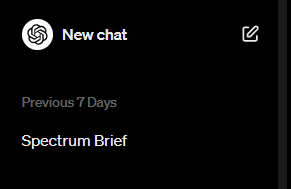Updated January 23, 2024
Reading Time: 5 minutes
AI is everywhere
AI is a powerful tool that can help businesses with SEO and content creation. In fact, 77% of companies are actively employing or exploring AI, with 35% specifically using it for content marketing.
AI can be used in a variety of ways to improve marketing, including:
- Personalizing content: It tailors content to each customer, enhancing engagement and results.
- Optimizing content: AI optimizes content for search engines, increasing visibility.
- Automating tasks: It allows marketers to concentrate on higher-priority activities.
AI is a valuable tool that can help businesses improve their marketing results. If you’re not using AI yet, read along and learn the guardrails, success stories, and tips for AI content marketing.
Guardrails Using AI in Digital Marketing Content
AI can sometimes create inappropriate, harmful, biased, and false information when used for content marketing. Thus, guardrails ensure that AI-generated content is ethical, responsible, and accurate. These boundaries act as a protective framework that guides the AI to produce content that meets ethical standards, legal requirements, and user expectations. Here are a few guardrails we use:
- Establish guidelines on how to use AI
When using AI in digital marketing, it’s important to set clear guidelines, just as you would for a new freelance writer. To maintain consistency, define your brand’s marketing standards, voice, and tone. However, do not rely solely on AI without editorial oversight. AI can help with many tasks, but human input is essential for idea development, storytelling, and brand editing to create a more refined and effective marketing strategy.
- Review information for accuracy and freshness
Although AI tools like ChatGPT can be helpful, they use old data from the web. This means they may not have the most up-to-date information. For example, ChatGPT’s database only has information up to 2022.
Always fact-check the information you use to ensure your marketing content is accurate and up-to-date. This is especially important for time-sensitive topics.
- Check for shallow content
AI models are good at generating text but may be unable to do in-depth analysis or independent thinking. Review and refine your outputs to ensure they align with your brand’s voice and convey information that resonates with your audience. AI-generated content can be verbose, so make it a part of your process to involve human expertise to craft targeted and unique messages.
- Copyright
There are copyright implications to content that is entirely created by AI. To avoid legal problems, do not claim full ownership of content. Instead, be open about the role of AI in creating content and follow intellectual property laws to ensure compliance and avoid potential complications.
- Rely on Subject Matter Experts
AI is helpful, but it can’t do everything we humans can. For example, AI can’t write content as engaging and effective as content written by a human with real-world experience and knowledge. That’s why involving subject matter experts in content creation is important. AI-generated content can be a good starting point, but having human experts involved in the editing, reviewing, and fact-checking ensures your content is high-quality and credible.
Does AI content work?
Skeptical about the results that AI gives? 44.4% of marketers have used artificial intelligence for content production. We’ve chosen a few success stories surrounding AI content marketing.
- Tomorrow Sleep leverages artificial intelligence (AI) to produce content on a large scale
Tomorrow Sleep, a startup aiming to boost organic traffic, utilized AI for transformative results. Using MarketMuse, an AI-powered tool, they conducted in-depth research and generated compelling content, significantly increasing website traffic.
Within one year, they increased from 4,000 to an impressive 400,000 monthly organic visitors. The strategic use of AI positioned their website as an authoritative source in search engines and secured a coveted featured snippet, marking a pivotal moment for Tomorrow Sleep and contributing to their remarkable success.
- Hubspot’s take on AI saves them time on content creation (40% of the time it would take manually)
Hubspot is another company that is open about using AI. Since they’ve started using it, AI has helped them generate topics, create outlines, generate videos, and write metadata.
For example, HubSpot Blog Manager Clint Fontanella wrote a blog post with 34 definitions of SQL keywords, operators, and statements. This type of post would typically take weeks to research and write. However, with the help of AI, Fontanella said it took about 40% less time to develop.
Fontanella believes that AI-powered copywriting can help with mundane tasks like crafting definitions and constructing outlines. This frees up writers to focus on optimizing posts with elements like custom multimedia, interactive modules, high-intent internal linking, and more.
AI tools we recommend
While preferences may vary across companies, these are tried and tested to work for our content marketing needs. In this section, explore the first recommendation: generating compelling content with Chat GPT.
- Generating content with Chat GPT
Although there are other powerful AI tools like Google’s Bard and Bing AI, we find Chat GPT the most useful. We recommend making a list of prompts that have worked for you and updating it as the AI evolves. Here are some staples from our collection:
- Rewrite and simplify to make it more client-centric.
- Summarize this content into 3 points.
- Limit it to 170 characters (great for writing meta descriptions!)
Chat GPT also allows you to start chats that you can return to. This way, you can tailor each one to different topics, purposes, or personas. For example, I can start a new chat for writing website content. I can then train the AI to learn our content brief, brand, and persona before asking it to write a blog.

- Cleaning up with Grammarly AI
Grammarly AI is another tool we use. Suppose you want to make sure your content is well-written and free of grammatical errors. In that case, you can paste your content into Grammarly AI and use prompts like:
- Check for any grammatical errors
- Suggest ways to improve the readability of this content
- Brainstorm other topics we did not cover
Grammarly AI is similar to Chat GPT, but it doesn’t hurt to get a second opinion!
- Add the finishing touches with Recraft AI images
All blogs and pages need visuals to help tell the story of the content. We use Recraft AI when an article requires specific elements that would be time-consuming to create in Photoshop or Canva.
Recraft AI lets you choose different styles and colors to match your brand. Remember that the technology is not as good as Chat GPT’s paid image AI, but it is excellent for creating unique elements to complete a header image or infographic. Be specific in your prompts and keep them short.

Harnessing the power of AI
In conclusion, AI content marketing is successful when it uses guardrails to ensure ethical and accurate results. Clear guidelines, fact-checking, and avoiding shallow content are all important for maintaining content quality. Addressing copyright concerns and involving subject matter experts can also help. We hope this article’s guardrails and recommended tools help your business maximize AI for your content marketing.

 Industry Leader: Spectrum Group Places in Top 10%
Industry Leader: Spectrum Group Places in Top 10%